A New Project Finished!
Last Friday, I typed the words “THE END” into a new young adult manuscript that I’ve been working on for most of the past year. I started it at the end of May, when I was in Lisbon and knew I had to get away from the steady stream of bad news coming over the internet from my country. So I packed my computer and walked ten minutes from the lovely convent where I was living to the Arts Cafe across the street from the Santa Apolónia train station. I did not ask for the cafe’s internet code. There I wrote two book reviews for which I had a deadline, then started on my then-untitled novel. In four hours, I had a completed first chapter.
Over the next week, as my husband and I traveled to Austria, I tinkered with the chapter, picking up ideas along the way. In contrast to many of my other novels, I didn’t start with a single character and keep writing with a vague goal in mind — my usually seat-of-the pants MO. For this one, I knew the basic storyline right away, and since it was an adventure/survival story, I needed an outline. The novel also alternated three point-of-view characters, so I had to become familiar with the protagonists and with the ways in which their central desires and their stories intersected.
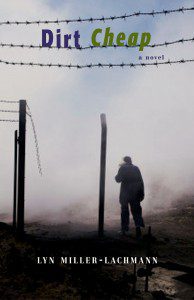 For this novel, the intersection of the stories was crucial. Ever since my third semester at Vermont College of Fine Arts, when advisor Sarah Ellis assigned books to read rather than letting advisees choose their own, I’ve been fascinated with the collective protagonist. Until then, all of my novels for teens — Gringolandia, Surviving Santiago, and Rogue — followed the first person point of view, present tense narrative that seems to dominate the YA category. My adult novel, Dirt Cheap, had a third person limited omniscient point of view, with chapters alternating between the three main characters, and I have read YA novels, such as Jeff Zentner’s award-winning The Serpent King, that was also written from the alternating close third person point of view of the three main characters. (For more on point of view, check out this piece I wrote, using Lego to demonstrate.)
For this novel, the intersection of the stories was crucial. Ever since my third semester at Vermont College of Fine Arts, when advisor Sarah Ellis assigned books to read rather than letting advisees choose their own, I’ve been fascinated with the collective protagonist. Until then, all of my novels for teens — Gringolandia, Surviving Santiago, and Rogue — followed the first person point of view, present tense narrative that seems to dominate the YA category. My adult novel, Dirt Cheap, had a third person limited omniscient point of view, with chapters alternating between the three main characters, and I have read YA novels, such as Jeff Zentner’s award-winning The Serpent King, that was also written from the alternating close third person point of view of the three main characters. (For more on point of view, check out this piece I wrote, using Lego to demonstrate.)
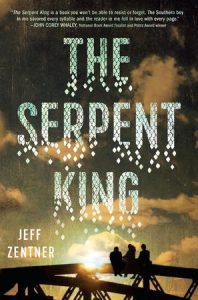 But while both Dirt Cheap and Zentner’s novel had third person point of view and multiple protagonists, they were not stories with a collective protagonist. Typically, in a multiple POV novel, there may be several main characters, each with their own arcs, but one character’s story dominates, even if that character may not be each reader’s favorite. In The Serpent King, Dill’s story is the principal one, with the other two circulating around it. In Dirt Cheap, Sandy, the young teacher, is the character whose arc dominates, as she’s the one who undergoes the most change over the course of the story. (If you’re one of the readers who said you had a major character crush on Nick, you proved the rule. Sandy had the same crush.)
But while both Dirt Cheap and Zentner’s novel had third person point of view and multiple protagonists, they were not stories with a collective protagonist. Typically, in a multiple POV novel, there may be several main characters, each with their own arcs, but one character’s story dominates, even if that character may not be each reader’s favorite. In The Serpent King, Dill’s story is the principal one, with the other two circulating around it. In Dirt Cheap, Sandy, the young teacher, is the character whose arc dominates, as she’s the one who undergoes the most change over the course of the story. (If you’re one of the readers who said you had a major character crush on Nick, you proved the rule. Sandy had the same crush.)
In a collective protagonist novel, each chapter may be from a different character’s point of view, but the main characters together are the protagonist. For instance, in Sergio Troncoso’s award-winning crossover novel From This Wicked Patch of Dust, the story of a Mexican-American family making a new life in a home they build themselves on the outskirts of El Paso, Texas, the family unit is the protagonist, as they face challenges and grow together. Each chapter is narrated in close third person from a different family member’s point of view. In my new novel, the three teenage characters have their own arcs — with internal and external desires and growth over the course of the story — but they come together as a unit and face life-and-death challenges as one. As it develops, their relationship changes them as individuals, but it also changes who they are as a collectivity.
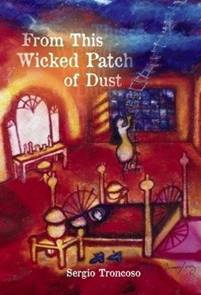 In order to move the story forward, I had to develop each plot point and then choose whose point of view would be the best one to show it. I saw each plot point as a question. Who would be the best character to answer that question and pose a new one — one that deepened the conflict and raised the stakes? In the end, I have a pretty even balance among the three points of view.
In order to move the story forward, I had to develop each plot point and then choose whose point of view would be the best one to show it. I saw each plot point as a question. Who would be the best character to answer that question and pose a new one — one that deepened the conflict and raised the stakes? In the end, I have a pretty even balance among the three points of view.
However, I have a character that I feel particularly close to for personal reasons. Today, we could consider him on the autism spectrum, though in that time and place psychologists had not yet codified the specific diagnosis. I grew up shortly after that time period and know intimately what it was like to feel different from everyone else, not to conform to what the adults in my life wanted for me, and to become the target of classmates who bullied for sport — while not knowing why I was that way or what I needed to do to fit in and gain the approval of those around me. Like my character, I wanted to be included, but I also wanted to be left alone to do my own thing. Writing an autistic main character into a collective protagonist story has become my way of addressing that question as both a writer and a person.
Four days later, I already miss my novel. I know I’ll have a revision process, and I plan to send it to my agent and submit it to publishers. I’ve written this version so quickly that my previous novel is still under consideration at multiple publishers, with potentially more submission rounds to go. Although the two are somewhat different in terms of genre (the earlier one more of a romance while this one more action/adventure), they address similar themes of teens living under and ultimately resisting oppression. Both are based on real people and events, but that’s only the starting point for the story.
This new book also represents my first own voices effort since Rogue. Many of Rogue‘s readers have asked me if there’s going to be a sequel, or another book with an autistic protagonist. Now I can answer with a resounding YES! The enthusiastic kids I spoke to at Alexander Hamilton Middle School and elsewhere are now in high school. I’m happy to report that I have kept my end of my promise, and I hope that they’ll have the chance to read this new book before 2020, when the first ones graduate.

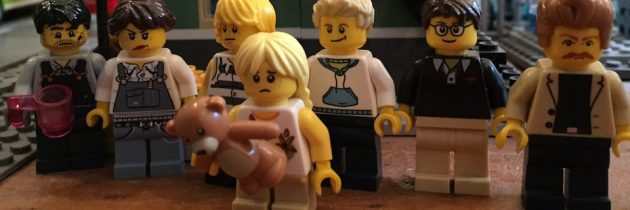

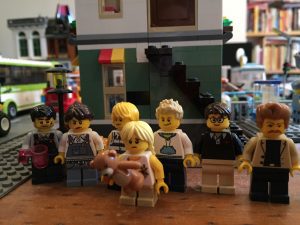





This is fascinating, Lyn. I always learn so much from you, and I can’t wait to read your new story. Best of luck! ????Mo
Thank you! I’ll keep you posted on what happens to it.
Congrats on finishing that novel, Lyn! I love how you represent your characters in LEGO form.
I’m also working on a collective protagonist novel with three main characters! Very challenging, but rewarding nonetheless.
I’d love to read yours when you’re done! Would you like to exchange?
Wow, Lyn. So intriguing. Congrats on finishing. I can’t wait to read!
Thank you! I’d love for you to read it!